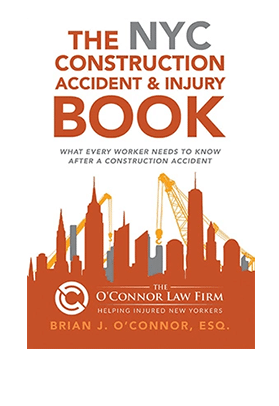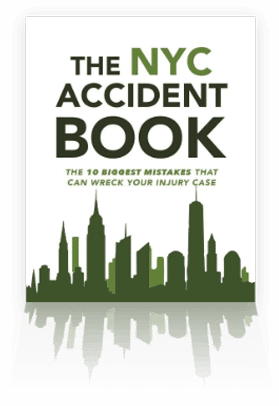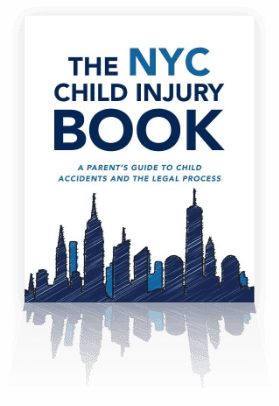NYC Lead Paint Poisoning Lawyer
Lead is a harmful metal that can cause serious health problems and is especially dangerous for children and pregnant women. If you or your child has been exposed to lead poisoning, contact Brian J. O’Connor to understand your legal options. He is available to answer your questions. For a free case evaluation, contact us today at 212-566-4868 or 718-948-3500 to learn more about how we can help you. There is no obligation and no fee unless we win your case.
What is Lead Poisoning?
Lead levels are measured in micrograms per deciliter (ug/dl) and is determined by a blood test. In 2018, 3,866 New York City children under six years of age were identified with elevated blood lead levels. In October 2019, New York State Public Health Law was amended to lower the definition of lead poisoning in a child to 5 ug/dl (previously 10 ug/dl). However, the CDC recognizes that there is no safe blood lead level in children. Even low levels of lead have been shown to affect children’s IQ, academic achievement and cause attention deficit disorder.
Sources of Lead Poisoning

In New York City, the most commonly identified source of lead poisoning is lead-based paint and the chips and dust caused from peeling paint. While the use of lead paint in homes has been banned for over 40 years, many older homes still have lead paint on their walls, windows, doors, and other surfaces. Lead dust from peeling, cracked or loose paint can land on windowsills, floors, surfaces and other objects people touch. Children under age 6 are more susceptible to lead poisoning because they tend to put their hands or objects in their mouths.
The main sources of lead poisoning include:
- At Home: Lead paint in older homes and buildings still present a hazard to young children when lead dust from peeling, cracked, or loose paint land on surfaces accessible to children.
- At Work: Workers can be exposed to lead by breathing in lead dust or lead fumes when working with metal, paint, or other substances that contains lead. Employers are required to protect workers from lead exposure.
- Drinking Water: Lead can be found in drinking water from older plumbing materials such as pipes, faucets and fixtures with lead.
- Soil: Lead can be found in soil either naturally or as a result of previous manufacturing or construction activities.
- Consumer Products: Toys, jewelry and other consumer products may have high levels of lead. When young children put toys or other products in their mouths it can expose them to toxic levels of lead.
Symptoms of Lead Poisoning

Lead poisoning is concerning because it often occurs with no obvious signs or symptoms and can go unrecognized for years without proper testing. Symptoms may not appear until dangerous amounts have accumulated. According to the Mayo Clinic, signs and symptoms of lead poisoning in children include:
- Developmental delays
- Learning difficulties
- Irritability
- Loss of appetite
- Weight loss
- Sluggishness and fatigue
- Abdominal pain or vomiting
- Constipation
Although children under 6 are most vulnerable to lead poisoning, adults are not immune. Lead poisoning symptoms in adults include:
- High blood pressure
- Joint and muscle pain
- Headaches
- Abdominal pain
- Memory or concentration problems
- Mood disorders
If you suspect you or your child has been exposed to lead, contact your health care provider and request a blood test. The only way to know for certain if your child has suffered lead poisoning is by taking a blood test. In New York City, children should be tested by their health care professional for lead exposure each year starting at age 1 until they are 6 years of age.
Injuries Caused by Lead Paint Poisoning
There is no safe level of lead exposure in children. Even low levels of lead can affect a child’s academic achievements. Long-term exposure can lead to serious health problems. According to the CDC, some of the health problems caused by lead exposure include:
- Damage to the brain and nervous system
- Slowed growth and development
- Learning and behavioral problems
- Hearing and speech problems
The CDC explains that these health problems can result in:
- Lower IQ
- Attention deficit disorder
- Underperformance in school
Treatment for elevated lead levels include removal from the environment, a high iron and calcium diet, and chelation therapy. Early intervention is extremely important to reducing the long-term effects of lead poisoning.
Lead Poisoning Prevention
The Mayo Clinic recommends simple measures that can protect you and your family from lead poisoning:
- Wash hands and toys. To reduce your child’s hand-to-mouth transfer of contaminated dust, soil or toys, wash your child’s hands after playing outdoors, before eating and at bedtime.
- Clean dusty surfaces. Clean your floors with a wet mop and wipe furniture, windowsills and other dusty surfaces regularly.
- Run cold water. If you live in older homes that may contain lead pipes or fittings, run cold water for at least a minute before using. Also, don’t use hot tap water to make baby formula or for cooking.
- Prevent children from playing on soil. Cover bare soil with mulch or plant grass to avoid exposing children to soil based lead hazards.
- Watch for peeling paint. If you live in an older home or suspect lead paint in your home, check regularly for peeling and cracked paint and fix problems immediately.
- Healthy diet. Regular meals and good nutrition will help lower lead absorption. Children need calcium, vitamin C and iron to help keep lead from being absorbed.
Who is Responsible for My Lead Poisoning?
Children who suffer from lead poisoning have several possible legal claims. The most obvious defendant is the landlord or property owner who failed to remove any lead paint hazards from the home or apartment. In New York City, owners of multiple dwellings that were built before 1960 where children under 6 years of age reside, (and those built between 1960 and 1978 if the owner knows there is lead-based paint present) are required to inspect, remove, cover or abate lead-based paint hazards.
Children may also have claims for lead poisoning against other locations where lead may be found, including schools and day care centers that are also required to remediate any lead paint hazards. Additionally, if a child is poisoned due to a toy or other consumer product, a claim can be made against the manufacturer, distributor and seller of the product.
We Will Help You Get The Compensation You Deserve
Lead poisoning can have long-term health consequences which may result in a lifetime of care. At The O’Connor Law Firm, we are dedicated to getting you a full and fair result. Below are some of the items of damages that you may be entitled to:
- Past and future pain and suffering
- Medical expenses
- Rehabilitation and therapy
- Cost of future medical care
- Loss of future earning potential
- Disability
- Emotional distress
- Loss of enjoyment of life
Don’t let insurance companies take advantage of you. Call The O’Connor Law Firm before you speak to an insurance adjuster to get the answers to your questions. We will explain your legal rights and deal directly with the insurance company on your behalf.
Contact An Experienced Lead Paint Poisoning Lawyer To Get Help Now
If you or your child have been exposed to lead poisoning, you need an experienced lead paint poisoning attorney on your side. At The O’Connor Law Firm, we will investigate the cause of your child’s lead poisoning and hold the responsible party liable. We have experience with child lead poisoning and will guide you through the legal process. We offer free initial consultations and are available 7 days a week. There is never a fee unless we win your case. Call us today at 212-566-4868 or 718-948-3500 to get help now.




